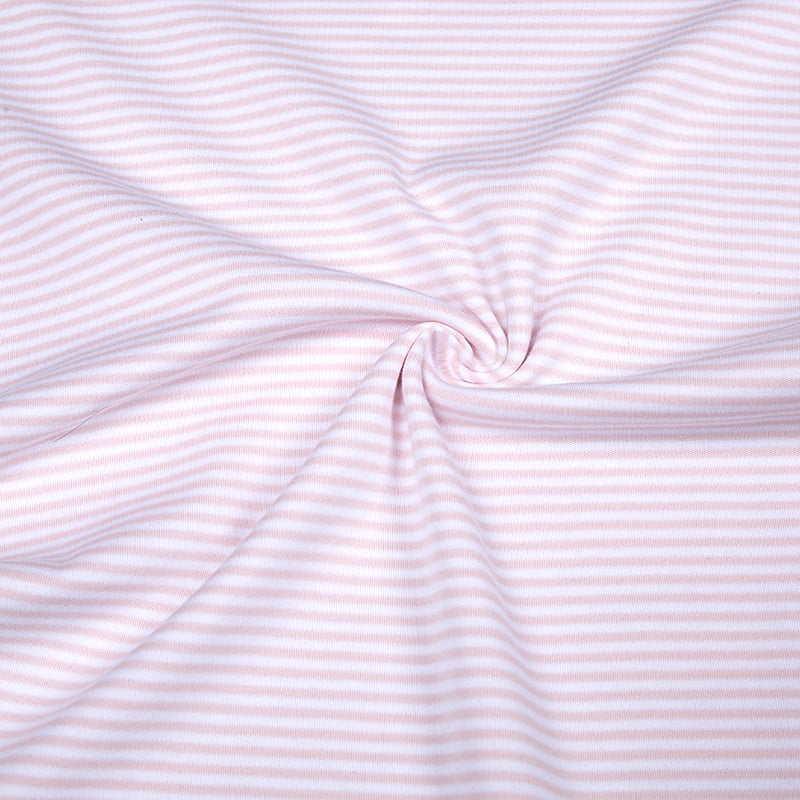
Yarn Characteristics: The type of yarn selected for interlock knitted fabric can influence its surface texture, weight, and dye affinity. For instance, cotton yarns are commonly used for their natural fiber properties and excellent dye absorption, while synthetic yarns like polyester or nylon offer durability and colorfastness.
Printing Method Compatibility: Different printing methods, such as screen printing, digital printing, or heat transfer printing, require specific yarn characteristics to achieve optimal results. For example, digital printing may require yarns with high dye affinity and uniform surface texture to ensure vibrant and precise print reproduction, while heat transfer printing may require yarns that can withstand high temperatures without distortion.

Surface Smoothness and Print Clarity: The smoothness of the yarn surface can impact the clarity and definition of printed designs. Yarns with a smoother surface texture tend to result in sharper and more detailed prints, whereas yarns with a textured or uneven surface may affect print clarity and consistency.
Stretch and Recovery Properties: Consideration of yarn stretch and recovery properties is essential, especially for interlock fabric used in garments where stretch is required. The yarn's elasticity should complement the printing method to ensure that the printed design retains its integrity and does not distort or crack during wear or movement.
The choice of double knit yarn is closely related to the chosen printing method, as both factors will affect the final appearance of the printed design.


 English
English 中文简体
中文简体











